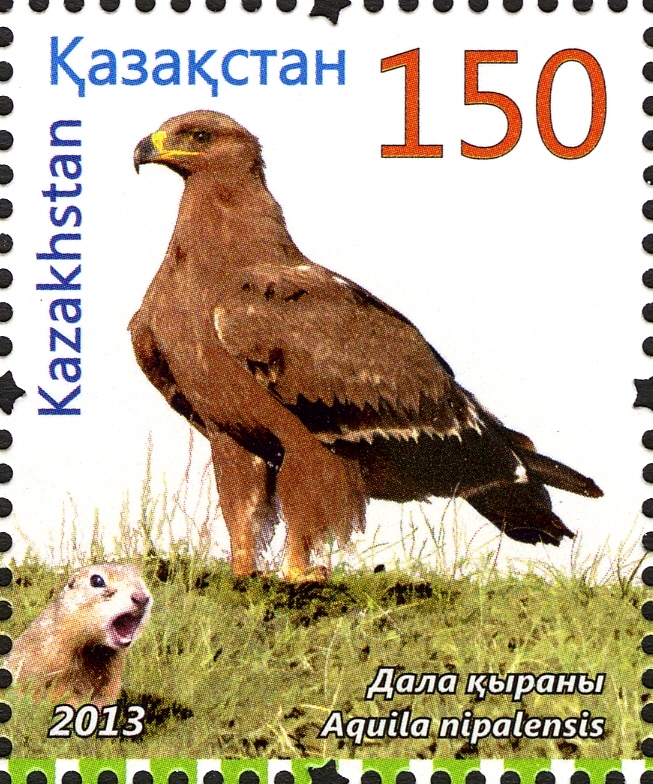|
| Query: bird | Result: 2732nd of 32675 | |
steppe eagle (Aquila nipalensis)
| Subject: | steppe eagle (Aquila nipalensis)
| | Poster: | Wiki Photos (---@---.---)
| |

| Resolution: 653x784
File Size: 390387 Bytes
Upload Date: 2017:04:03 14:01:55
|
English: Stamps of Kazakhstan, 2013
Date 2013
Source wnsstamps.ch
Author Post of Kazakhstan
Source: https://commons.wikimedia.org/wiki/File:Stamps_of_Kazakhstan,_2013-62.jpg
The steppe eagle (Aquila nipalensis) is a bird of prey of the family Accipitridae. The steppe eagle breeds from Romania east through the south Russian and Central Asian steppes to Mongolia. The European and Central Asian birds winter in Africa, and the eastern birds in India. |
^o^
Animal Pictures Archive for smart phones
^o^
|
|